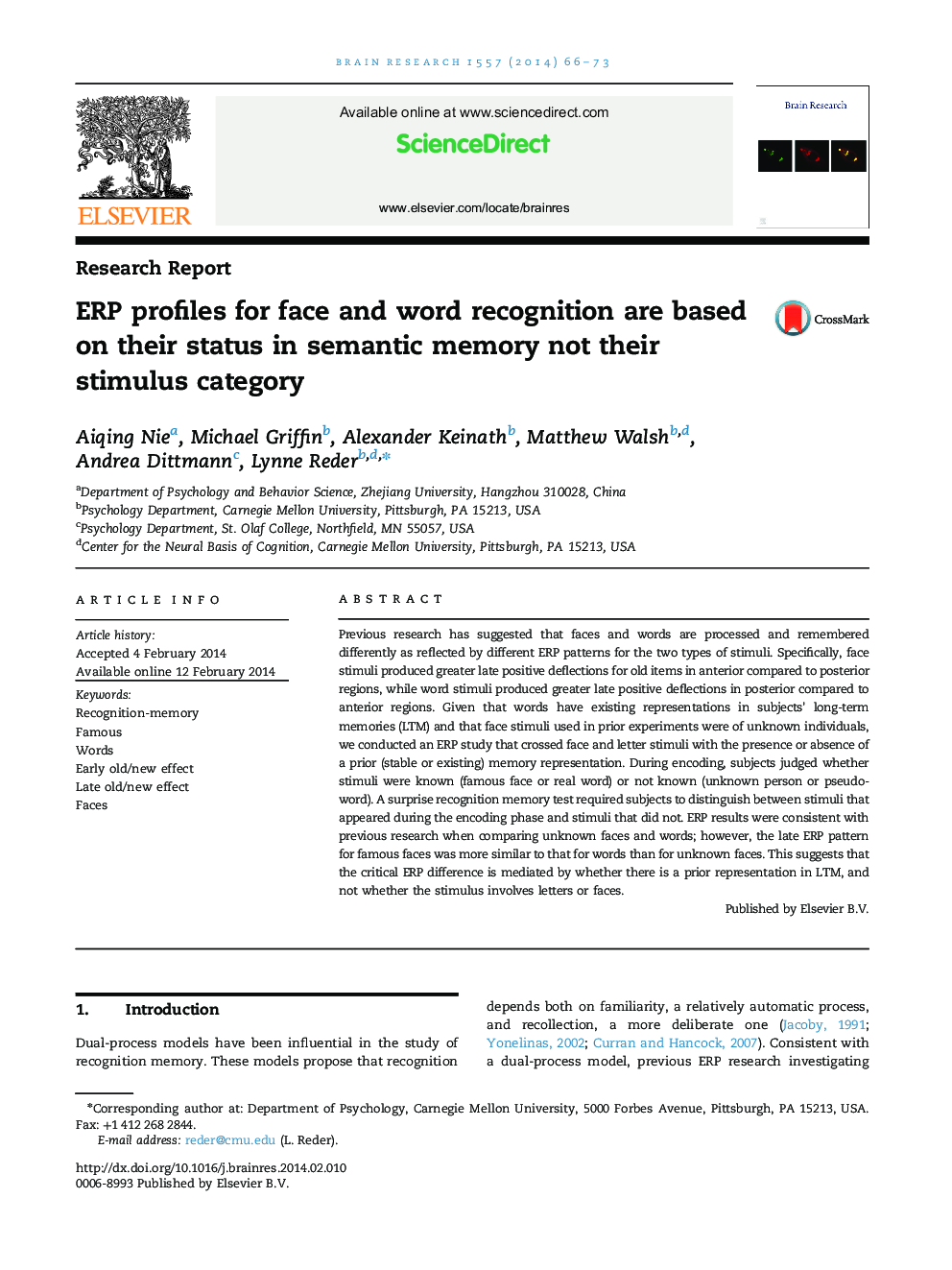| کد مقاله | کد نشریه | سال انتشار | مقاله انگلیسی | نسخه تمام متن |
|---|---|---|---|---|
| 6263384 | 1613882 | 2014 | 8 صفحه PDF | دانلود رایگان |
- Prior results of material specific effects were confounded with prior knowledge.
- Words, pseudo-words, famous and unknown faces were stimuli in an ERP old/new task.
- Replicated past findings for words and unknown faces׳ old/new effects.
- Famous faces׳ late old/new effect is similar to that of words, not unknown faces.
- We conclude that prior experience, not stimulus type, mediates old/new effects.
Previous research has suggested that faces and words are processed and remembered differently as reflected by different ERP patterns for the two types of stimuli. Specifically, face stimuli produced greater late positive deflections for old items in anterior compared to posterior regions, while word stimuli produced greater late positive deflections in posterior compared to anterior regions. Given that words have existing representations in subjects׳ long-term memories (LTM) and that face stimuli used in prior experiments were of unknown individuals, we conducted an ERP study that crossed face and letter stimuli with the presence or absence of a prior (stable or existing) memory representation. During encoding, subjects judged whether stimuli were known (famous face or real word) or not known (unknown person or pseudo-word). A surprise recognition memory test required subjects to distinguish between stimuli that appeared during the encoding phase and stimuli that did not. ERP results were consistent with previous research when comparing unknown faces and words; however, the late ERP pattern for famous faces was more similar to that for words than for unknown faces. This suggests that the critical ERP difference is mediated by whether there is a prior representation in LTM, and not whether the stimulus involves letters or faces.
Journal: Brain Research - Volume 1557, 4 April 2014, Pages 66-73
